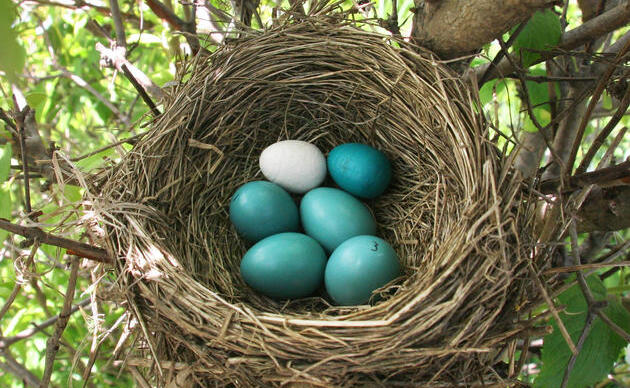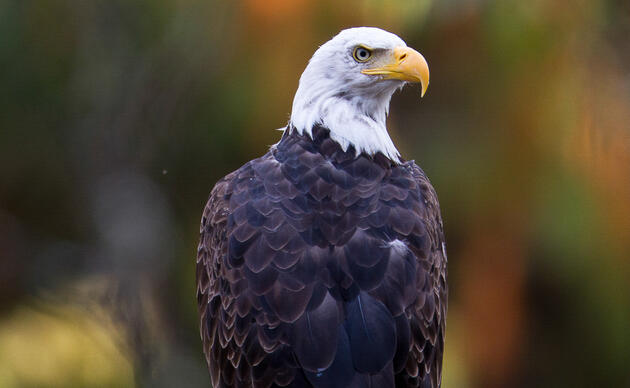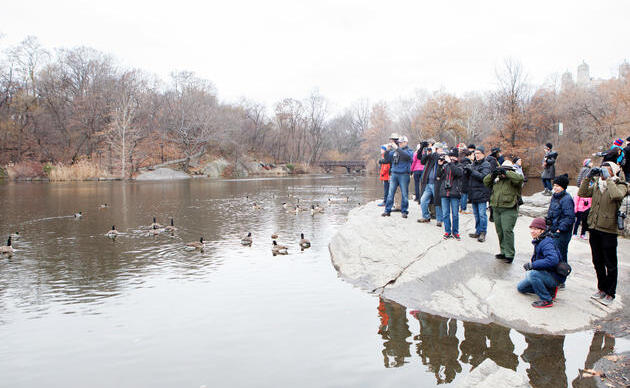Frequently Asked Bird Questions
Q: What do I do if I see a young bird on the ground?
A: More than 75% of young birds "rescued" do not need help. Often the parents are nearby watching over the young. Some birds leave the nest prior to their ability to fly and will spend days on the ground while being trained by their parents. If the young bird is at risk (cats, dogs), try locating the nest and place the bird back in as best you can. If you cannot find the nest, leave the bird in an open-top, shallow box or basket and place it nearby out of reach of predators.
Very young birds or eggs that have fallen from the nest may be gently placed back in the nest. Birds have a very poor sense of smell and will not abandon an egg or baby handled by humans. A destroyed nest can be substituted using an open box, basket or hanging planter lined on the bottom with grasses, pine straw or moss. The new nest should be observed for 4-6 hours to determine that the parents have returned to the young.
If a bird is truly abandoned, it must be turned over to a licensed rehabilitator for care. It is illegal to keep or care for wildlife without a permit. Contact the Wildlife Rehabilitation Center of Minnesota at 651-486-9453.
Q: What do I do if I find an injured bird?
A: Try to make the animal as comfortable as possible and call the Wildlife Rehabilitation Center of Minnesota at 651-486-9453. If you live outside the metro area, the Wildlife Rehabilitation Center can direct you to a licensed rehabilitation provider in your area. If you find an injured raptor, contact the University of Minnesota Raptor Center at 612-624-4745.
Q: Who can I call if I learn about people harming birds, bird nests and/or bird eggs?
A. You can call the “Turn in Poachers (TIP)” hotline. Statewide toll-free: 1-800-652-9093. Available 24 hours a day, 365 days a year.
Q: Is it safe to feed my hummingbirds nectar with red dye as sold in most stores?
A: The red dye is not necessary to attract hummingbird. The color on your feeder is enough to attract them. You can mix your own nectar using ¼ cup sugar to every 1 cup of warm water. During hot weather be sure to empty the feeder and refill every three or four days. Avoid honey due to the potential of botulism, and avoid artificial sweeteners due to the lack of nutritional value.
Q: What is safe to feed my backyard birds?
A: Most of the prepackaged wild birdseed and suet cakes are a favorite among backyard birds. These items can be obtained from most grocery stores, pet stores or bird seed stores. Black oil sunflower, safflower, nyger thistle, and suet are all good foods to feed.
Q: What do I do about birds building a nest in an inappropriate place on my property?
A: The best advice is to stop this process as soon as it starts. If there are no eggs or young birds present, remove the nest materials by hand or with a hose, making sure not to injure any nearby wildlife. This action is only appropriate in the beginning stages of nest building. If nesting has already begun, it is against the law to injure or disturb wildlife.
Q: How do I keep birds from flying into my windows?
A: The birds are seeing a reflection of the place where they want to be (trees, flowers, etc.). Impede this reflection by putting things in the windowsill or by hanging Mylar strips just outside the window. The birds will see the moving strips and will not be tempted to fly into them. Male birds often will peck at their reflection thinking that their reflection is another male attempting to take over their territory. Covering the windows as indicated above will help reduce this.
Q: How long is the incubation period for my backyard birds? How long until the young ones leave the nest?
A: The length of time varies from species to species. Here are a few common birds:
- American Robin: 12-14 days incubation; 14-16 days until young first fly.
- Ruby Throated Hummingbird: 14-18 days incubation; 18-21 days until young first fly.
- House Finch: 12-16 days incubation; 11-19 days until young first fly.
- Mourning Dove: 17-19 days incubation; 35-37 days until young first fly.
- Eastern Phoebe: 15-17 days incubation; 20-21 days until young first fly.
- Cliff Swallow: 12-16 days incubation; 23 days until young first fly.
- American Crow: 18 days incubation; 28-35 days until young first fly.
Q: How can I identify what kinds of birds are in my backyard?
A: The best way is to purchase a bird identification book. The National Audubon Society has a Field Guide to North American Birds for the Eastern and Western regions. These books include color photographs and descriptions of the birds you may find in your backyard.
Q. Should I provide suet year around for the birds?
A: Yes, as long as it not raw suet. The artificial suet bought at bird food stores is a good choice as it doesn't melt as easily as raw suet. Suet is a great source of food for the parent birds to break off and bring to their young.
Q. What can I do to reduce bird mortality from cats?
A: Keep the cat on a leash or keep it indoors. Scientists estimate that free-roaming cats (owned, stray, and feral) kill hundreds of millions of birds. Keeping the cat indoors is better for the cat and for the birds.




